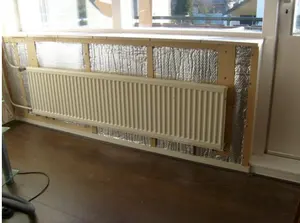Introduction to Bubble Foil Insulation
Bubble foil insulation is a modern insulation material that combines air bubbles and reflective foil to provide an effective barrier against heat transfer. This innovative solution is designed to reflect radiant heat while the encapsulated air bubbles offer an additional layer of insulation. Ideal for a range of applications, bubble foil insulation is a versatile choice for thermal regulation in buildings and packaging industries.
Types and Applications
There are various types of bubble foil insulation tailored to different applications. Some are designed with single or double bubble layers, while others may have one or two foil sides. This insulation is commonly used in residential and commercial buildings, under floors, in walls, and attics, as well as in the automotive industry for thermal management.
Material and Structure
The core material of bubble foil insulation consists of polyethylene air bubbles, which are known for their excellent thermal resistance. The outer layers are typically made of aluminum foil, which reflects heat and prevents the passage of radiant energy. This combination results in a lightweight yet durable insulation material that is easy to handle and install.
Features and Advantages
Bubble foil insulation is recognized for its moisture resistance and thermal properties. It is also known for its ease of installation, as it can be cut and shaped to fit various spaces without the need for specialized tools. The material's flexibility and durability make it a practical choice for both new construction and retrofit applications. Additionally, its resistance to corrosion and low thermal conductivity contribute to its effectiveness as an insulator.
Environmental Impact and Sustainability
Sustainability is a key consideration in building materials, and bubble foil insulation is no exception. This product is often chosen for its energy-saving potential, as it can significantly reduce the need for heating and cooling in buildings. Furthermore, by minimizing energy consumption, bubble foil insulation can contribute to lower carbon footprints, aligning with eco-friendly building practices.
Choosing the Right Insulation
Selecting the appropriate bubble foil insulation requires an understanding of the specific insulation needs of a project. Factors such as climate, space constraints, and fire resistance ratings should be considered to ensure optimal performance. Alibaba.com presents a diverse assortment of bubble foil insulation options, enabling buyers to find the right match for their insulation requirements without compromising on efficiency or sustainability.












































 浙公网安备 33010002000092号
浙公网安备 33010002000092号 浙B2-20120091-4
浙B2-20120091-4